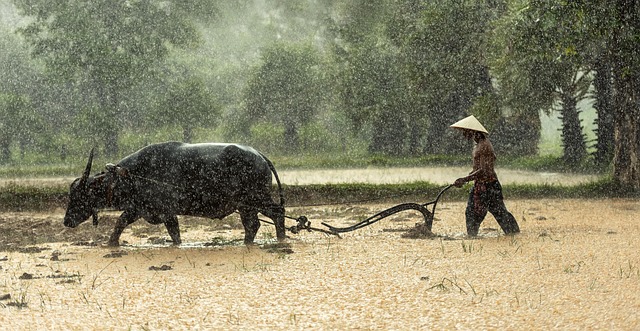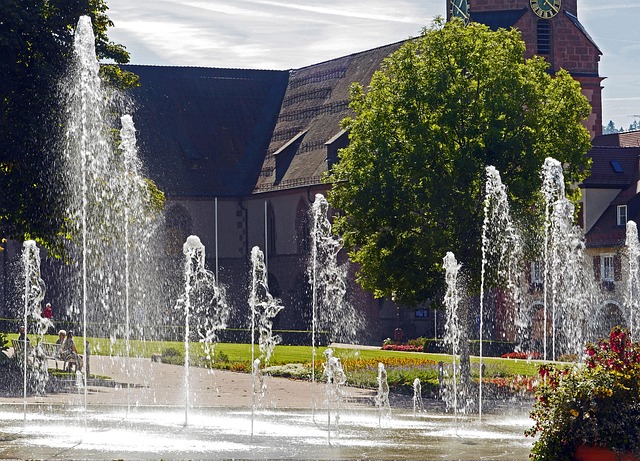The idea of a Livelihood in Nature is more than a romantic vision; it is a practical framework that integrates human well‑being with ecological stewardship. In a world where environmental pressures mount, people are increasingly turning to gardens, farms, and community plots as sources of food, income, and identity. These green habitats become hubs where the rhythms of seasons and the pulses of wildlife intersect with everyday life, creating resilient ecosystems that support both biodiversity and human prosperity.
From Roots to Riches: The Economics of Green Spaces
At first glance, gardening may seem like a hobby, but for many, it is a viable income stream. Micro‑farms, rooftop gardens, and urban orchards demonstrate how cultivating crops on a small scale can generate sales that rival traditional agriculture. By adopting permaculture principles—such as using native plant species, composting kitchen scraps, and capturing rainwater—gardeners reduce input costs while enhancing soil fertility. The result is higher yields, lower waste, and a steady cash flow that sustains households.
- Direct market sales to local consumers
- Farmers’ markets and community‑supported agriculture (CSA) subscriptions
- Educational workshops on sustainable gardening techniques
Urban Orchards: A New Frontier
In cities, space is scarce but opportunities are abundant. Vertical gardens, balcony trellises, and community allotments turn concrete into productive green life. Urban orchards not only provide fresh fruit, but also serve as habitats for pollinators, birds, and beneficial insects. When thoughtfully designed, they mitigate heat islands, improve air quality, and foster a sense of community.
“Every apple tree planted in the city is a small act of defiance against climate change,” says a local horticulturist.
Integrating Wildlife: Biodiversity as an Asset
One of the core principles of a thriving Livelihood in Nature is that humans are part of the ecosystem, not its dominators. By creating habitats that support butterflies, bees, and native birds, gardeners turn their plots into living laboratories. Biodiversity is not merely an ecological concern; it directly boosts crop productivity. Pollinators transfer pollen between flowers, while predators such as ladybugs keep aphid populations in check. In many cases, diversified plots yield more produce per square meter than monoculture systems.
- Planting native flowering species for pollinator support
- Installing birdhouses and bat boxes for natural pest control
- Maintaining hedgerows as corridors for wildlife movement
Water‑Wise Design: Irrigation and Conservation
Water scarcity is a growing threat to sustainable food production. Effective water management transforms a garden into a resilient habitat. Techniques such as drip irrigation, mulching, and rain barrels reduce evaporation and keep moisture where it is needed. A well‑designed irrigation system can cut water usage by up to 50%, preserving precious resources for future generations.
Soil Health: The Foundation of a Green Habitat
Healthy soil is the bedrock of a productive Livelihood in Nature. It stores carbon, regulates water, and nurtures a diverse community of microbes. Composting kitchen scraps and leaf litter introduces organic matter that feeds earthworms and bacteria. No‑till practices, cover cropping, and crop rotation further protect soil structure and fertility.
- Adding compost reduces the need for chemical fertilizers
- Cover crops prevent erosion during fallow periods
- Rotation of legumes and heavy feeders balances nutrient demands
Building Green Infrastructure in Rural Communities
In rural areas, green infrastructure takes the form of agroforestry, agro‑silviculture, and sustainable logging. By integrating trees with crops, farmers create multi‑layered systems that generate income from timber, fruit, and timber products while improving soil health and sequestering carbon. This approach aligns with the broader goal of a Livelihood in Nature that respects ecological limits and human needs.
Education and Empowerment: Training the Next Generation
Knowledge transfer is essential for scaling green habitats. Community workshops, school programs, and online courses teach people how to design, plant, and manage ecosystems that benefit both people and nature. When families learn to grow their own food and maintain biodiversity, they develop a deeper connection to the land, leading to healthier lifestyles and stronger social ties.
Success Stories: From Homestead to Marketplace
Consider the example of a small farm in the Midwest that transitioned from conventional monoculture to a mixed‑species garden. By planting fruit trees, berries, and edible flowers, the farm now sells produce at local markets and supplies fresh herbs to restaurants. The diverse crop mix attracts pollinators and reduces pest outbreaks, cutting the need for pesticides. The farm’s revenue has increased by 35% while its carbon footprint has shrunk dramatically.
Policy and Incentives: Encouraging Sustainable Practices
Governments can play a pivotal role by offering subsidies for green roofs, tax credits for composting, and grants for community gardens. These policies lower the financial barriers that often deter individuals from investing in sustainable practices. By aligning public support with ecological outcomes, societies can accelerate the transition toward a resilient, biodiverse economy.
Future Directions: Integrating Technology with Tradition
Smart irrigation controllers, soil sensors, and drone monitoring provide precise data that help gardeners optimize resource use. However, technology must be blended with traditional knowledge to maintain cultural relevance. A hybrid approach ensures that innovations enhance, rather than replace, the intimate human‑nature relationship at the heart of a Livelihood in Nature.
Ultimately, cultivating green habitats is a journey that begins with a single seed and ends with a thriving ecosystem that nourishes both humans and the planet. By embracing biodiversity, conserving water, and fostering community engagement, people can create self‑sustaining systems that deliver food, income, and hope. The vision of a Livelihood in Nature is not an abstract ideal—it is a living, breathing reality that unfolds in gardens, farms, and forests across the globe.




